Of all the assignments for Dinner Doctor solutions, the one I was least looking forward to was what to do with leftover fizzy pop. Having said that, I do like a challenge, even if I can't necessarily find a cure for the problem. By weight, carbonated soft drinks was the fifth largest source of avoidable domestic food waste in the UK in 2012, according to WRAP's Household Food and Drink Waste report. And a recent report shows that a quarter of all UK food is thrown away.
Of the avoidable waste, carbonated soft drinks accounted for about a third (230,000 tonnes) of the total at a cost of £200m. While mathematics is not my strong point, I work that out to be equal to 93 Olympic sized swimming pools. Ninety-three!
I would have thought it was fairly obvious that the reason we throw so much away (or more likely, pour it down the drain) is because once opened, carbonated drinks have a fairly short lifespan. Once they have lost their fizz, they have lost their sparkling allure.
So in addressing the problem of what to do with flat pop, I decided to work with what I'd got; essentially make a virtue out of drinks that are tooth-achingly sweet and highly fruity. Suddenly it didn't seem as insurmountable as I could just look for recipes that typically contain a load of sugar. So look away now if you are avoiding the sweet life.
I am of that age when one of the simplest childhood pleasures was drinking a bottle of neon pink-orange Tizer through a clear plastic spiral straw or drinking cola so fast that the bubbles made you sneeze. As a child, fizzy pop was something of a treat, to be drunk at kids' parties or sitting in a pub garden, or more likely considering the British weather, in the back seat of the car (back in the days when pubs were completely child-free). So rather than feeling like a chore, this week's Dinner Doctor assignment has been a lovely wallow in nostalgia as I searched for and played with my recipes.
I would add that I wouldn't bother cooking with "diet" carbonated drinks'; they just don't work as well and leave an unpleasant chemically aftertaste.
1. Cheats' pulled pork
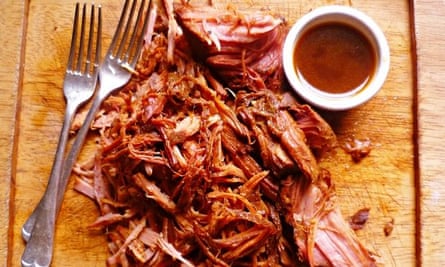
Unless you have been hibernating for the past few years, it would be hard not to notice the explosion of American food in the UK – the dirtier and trashier the better. And it is not hard to see why because when done well, it is a delicious if guilty pleasure.
I am very fond of pulled pork but didn't have the time or appropriate cut of meat to make it. Felicity Cloake's perfect pulled pork shows you how it should be done. But while pork shoulder, marbled with fat, will work much better, it will also take some eight hours to cook. So I used a piece of gammon, largely because it was on special offer at my local supermarket. I couldn't resist and was curious as to how it would turn out. Beautifully, of course. What it lacks in authenticity, it makes up for in flavour.
Ingredients:
vegetable oil
1 piece of unsmoked gammon (mine weighed 700g)
1 onion, roughly chopped (plus 1 onion to use as a trivet if necessary)
2 garlic cloves, roughly chopped
330ml Dr Pepper (or cola)
4 tbsp cider vinegar
3 tbsp Worcestershire sauce
salt (optional)
spice rub
2 tsp brown sugar
1 tsp cayenne pepper
1 tsp ground cumin
1 tsp paprika
half tsp smoked paprika
1 tsp mustard powder
freshly ground black pepper
soft rolls or tortilla wraps, to serve
Combine the spice rub ingredients together.
Rub the gammon all over with the spice rub. Make sure you give it a good massage. Set aside in the fridge for at least 4 hours, or overnight.
Heat a little oil in a saucepan and gently fry the chopped onion and garlic for 10 minutes until beginning to soften, stirring occasionally. Tip the Dr Pepper into the saucepan together with the cider vinegar and Worcestershire sauce. Bring to the boil then set aside.
Pre-heat the oven to 160C/Gas Mark 3.
Place the gammon on a trivet or rack in a roasting tin. (If you don't have a trivet, then use an onion cut into thick rounds. Place the gammon on the onion slices, which helps to prevent the meat from sticking to the bottom of the roasting tin. It actually adds more flavour.)
Pour the liquid and cooked onion over the meat. Cover and cook until the pork is very tender and beginning to fall apart and separate easily – about two-and-a-half hours.
Transfer pork to a chopping board, reserving pan juices. Take two forks, one in each hand and shred meat. Tip the shredded meat into a large bowl and pour over a little of the cooking liquid, enough to moisten.
Serve in soft bread rolls or tortilla wraps with the cooking liquid on the side. (You can blend up the liquid for a thicker sauce.)
If you feel like a bit of tradition, then serve with your favourite BBQ sauce, coleslaw, potato salad or mac 'n' cheese.
Tip: I didn't add any salt too my recipe as the meat was salty enough. You may want to add more to the cooking liquid to suit your taste.
2. Korean-style marinated beef

Korean food seems to have been one of Asia's best kept secrets, certainly as far as the British are concerned. Long overdue there have been several new Korean restaurant openings in London. So never one to miss an opportunity to find a wagon to jump on, I give you "bulgogi", or Korean marinated grilled beef. The sesame marinade is sweet and salty, which caramelises slightly as you fry or grill; an utterly delicious introduction to Korean food.
Traditionally this is eaten rolled inside a lettuce leaf, and then dipped into the accompanying sauces, then eaten in one, perhaps two, bites. Each mouthful the perfect combination of sweet and salty with a bit of savoury bite with the wonderful texture of tender beef and crisp lettuce.
Serves 4
Ingredients:
4 beef steaks (about 250g each), trimmed (you can thinly slice if prefer or leave whole). Rump steaks works best for me, but choose whichever steak suits your budget!
vegetable oil
marinade
200ml cola
3 tbsp dark soy sauce
3 tbsp Chinese rice wine, mirin or dry sherry
1 ½ tbsp rice wine vinegar
1 tbsp sesame oil
2 star anise
1½ tbsp dark brown sugar
1 tbsp toasted sesame seeds (ground in a spice grinder or with a pestle and mortar)
¼ tsp freshly ground black pepper
4-5 garlic cloves, very finely chopped
2 tbsp very finely chopped fresh ginger (about 2½ cm)
spring onion salad
2 tsp dark soy sauce
2 tsp rice wine vinegar
2 tsp sesame oil
5 spring onions, cut on the diagonal into fine slivers
¼ tsp chilli powder (or according to taste)
¼ tsp ground toasted sesame seeds
little gem or iceberg lettuce, leaves separated and dried, to serve
sweet and sour dipping sauce
1 tbsp doenjang - Korean soy bean paste (or replace with miso)
1 tbsp (or to taste) gochujang - Korean chilli paste (or thick chilli sauce and a squeeze of lime juice)
3-4 tbsp sherry vinegar
4 tbsp vegetable oil
little gem lettuce leaves, to serve
If you can, give the steaks a bit of a pounding (I use a wooden rolling pin). This helps to tenderise the meat and also to flatten it to about 1cm thick. Either leave the steaks whole or cut into thin strips, depending on how you like it.
Make the marinade by combining all the ingredients (from cola to fresh ginger).
Place the steaks in a large, shallow bowl and pour over the marinade. Turn the meat over in the marinade several times to ensure that it is well coated. Massage it if you want to! Cover and refrigerate for at least 1 hour.
10 minutes before cooking take the steaks out of the fridge.
Heat a large over a medium-high heat. The pan will be hot enough when you can't hold your hand above the pan for more than about 8 seconds.
Shake off the excess marinade. With a pastry brush and lightly brush the side of each steak with a little vegetable oil. Add the steaks to the hot pan and cook on each side for 2 to 3 minutes for medium rare, or longer depending on how you like your steak.
Remove the meat to a chopping board and let it rest for about 10 minutes before thinly slicing on the diagonal.
Make the spring onion salad by tossing the onions with the rice wine vinegar, sesame oil, chilli powder and sesame seeds. Don't make the onion salad too far in advance as the onion will become soggy and the green parts will wilt.
Whisk together the ingredients for the sweet and sour dipping sauce.
Serve with the spring onion salad and crisp lettuce leaves – place a few slices of the meat onto a lettuce leaf. Add a little of the spring onion salad and sweet and sour dip. Roll up the leaf and eat immediately. (Alternatively, serve the beef over plain steamed rice.)
Tips:
I like to serve mine with sliced spring onions and cherry tomatoes, chargrilled in the pan after the steaks have cooked. They soak up all the wonderful flavours.
Should you have any leftovers, this makes a fabulous sandwich, with added cucumber strips and crisp lettuce.
3. A grownup slushie

I mentioned my fond memories of Tizer earlier in this piece. Could this very sweet and fruity soft drink work as a sorbet? I knew that it would look good in terms of colour but what would it taste like?
Well, you can turn just about any kind of leftover fizzy drink (or leftover wine for that matter) into a sorbet. A sorbet is essentially just water, pureed fruit and sugar. I decided to add vodka, which meant that my sorbet wouldn't freeze completely solid. But on a hot summer's day the grown-up slushie was just the thing.
Freezing fizzy drinks in ice cube trays as and when you have leftovers and then tipping them into a small bowl is actually a nice and simple dessert, particularly if you add a little fresh fruit to it.
Ingredients:
500ml Tizer (or fruity carbonated drink)
100ml vodka
Tip the liquid into a shallow freezer-proof container (preferably with a lid). Carefully place it in the freezer. Leave until ice crystals start to form – about 4 hours.
Break down the crystals with a fork (or tip into a blender and give a quick whiz).
Add the vodka and stir through. Refreeze overnight. The alcohol in the vodka means that the sorbet will not freeze solid – making it the perfect slushie. Cheers!
Tips:
Add some pureed fruit to the mix. You can always delude yourself that this is healthy. (Well I know I do.)
I freeze screw-top containers with frozen sorbet to take to picnics. Put them in a cool box and they help to keep the other food chilled, even as they defrost a little.
4. Lemonade jelly
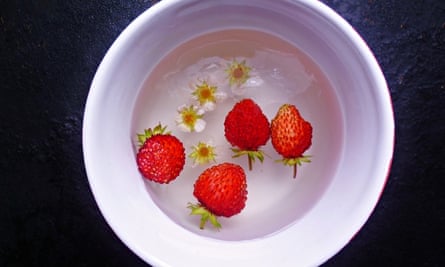
Continuing my nostalgic theme, I couldn't resist making jelly, albeit a grown-up one. I added soft fruit and edible flowers foraged from my garden. Ice cream is optional.
Ingredients:
500ml lemonade
1 stick of bruised lemongrass
5-6 gelatine leaves (see below)
cold water
chopped fruit or edible flowers
A quick jelly-related rule of thumb. You will need one sheet of leaf gelatine for every 100ml of liquid. So, if you are intending to pour the jelly into glasses, then you will only need 5 leaves of gelatine for 500ml of liquid. However, if you are planning on unmoulding your jelly, then you will need 6 leaves to produce a firmer jelly and to prevent the jelly from breaking apart as you slip it out of the mould.
Using a pair of scissors, cut the gelatine sheets into 6 pieces. Tip into a bowl of cold water. Leave for about 5 minutes to let the gelatine soften.
Heat the lemonade and lemongrass over a low heat for 5 minutes to allow the flavours to infuse. Don't let it boil. However, if it does, let it cool a little before adding the softened gelatine.
When the gelatine is soft and flexible (a bit jelly-fish like), gently squeeze out any excess water.
Remove the lemongrass stick from the lemonade.
Add the gelatine to the warm lemonade. Gently hit, stirring, until the gelatine has completely dissolved.
Fill your moulds, ramekins or glasses with half the amount of jelly you need for each container. Leave to set until firm. (In my case this was 4 hours in a cool room rather than in the fridge). Top with bits of chopped fruit or edible flowers.
Ensure that the rest of your jelly is still liquid. (You may need to gently reheat.) Carefully pour the rest of the jelly over the fruit or flowers.
Chill the jellies until set.
Tips: Gelatine is made with pork, so vegetarians should use an alternative such as agar-agar. Replace the lemongrass with lemon zest. Infusing the lemonade with a few herbs such as bay leaves or fresh thyme, is rather nice too.
Other ideas for using up leftover carbonated drinks:
5. Beth of Jam and Clotted Cream cooks Jean Christophe Novelli's reintepretation of a French classic - Duck a l'Orangina!
6. How about rippling your vanilla ice cream with a fruity syrup made with Vimto and fresh fruit?
7. Libby Plummer of London Baking made an Irn Bru cupcake to celebrate Burns Night. It does look rather spectacular!
8. Add cubes of frozen fruit soda or lemonade to chill summer punches.
9. Amy of Oh Bite It uses ginger ale in her totally gingery blondie bakes.
10. If you are using cut fruit such as apples in baking or desserts, it is worth soaking them in lemonade, which helps to prevent browning before use.
11. Isabelle Boucher of Crumb uses cola to glaze chicken wings, which I am assured by Chinese friends is a favourite ingredient for home cooks in China. (Who knew?)
12. Amber of Sprinkled with Flour makes American biscuits using 7-Up. (These are very similar to British scones).
13. Continuing the Americana theme, Kathleen of Gonna Want Seconds makes delicious Boston-style baked beans using cola.
14. Nikki of Chef-in-Training uses 7-Up in a peppery Chinese-inspired marinade for chicken.
15. Chef Matt Tebbut uses lemonade in his lemonade and lime citrus cake. Using fizzy lemonade helps to aerate the cake and the sponge has a lovely light texture.
16. If perennial favourite dandelion and burdock is more your thing, how about Philip Brocklehurst of What's for Tea Tonight Dear's ham recipe?
17. Jules at Butcher Baker has also acquired a taste for dandelion and burdock, using it in her cupcake recipe.
18. Michelle of Brown Eyed Baker makes these heavenly Cherry Coke Float cupcakes.
19. Have you tried Nigella's trusted ham in coca cola recipe?
20. Eric Rogell of The Batchelor Guy has 34 ways of using up cola – none of which involve eating. OK, these aren't recipes in the food sense, but if you need a way of cleaning up your car battery or loosening rusted nuts and bolts, then this is the read for you. (I might actually try his suggestion of using coke to clean burned pans.)
The next time I make a grownup slushie, I am thinking of using Irn Bru. But does madness lie this way? What would you do with pop that has lost it's bubble?
Rachel Kelly is the Guardian home cook of the year 2013. Read more on her website or follow her on Twitter @MarmadukeS.
Interested in finding out more about how you can live better? Take a look at this month's Live Better challenge here.
The Live Better Challenge is funded by Unilever; its focus is sustainable living. All content is editorially independent except for pieces labelled advertisement feature. Find out more here.
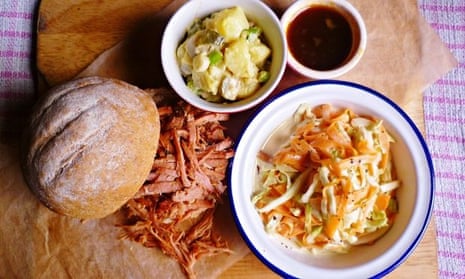

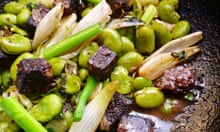



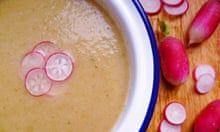
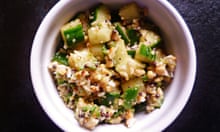

Comments (…)
Sign in or create your Guardian account to join the discussion